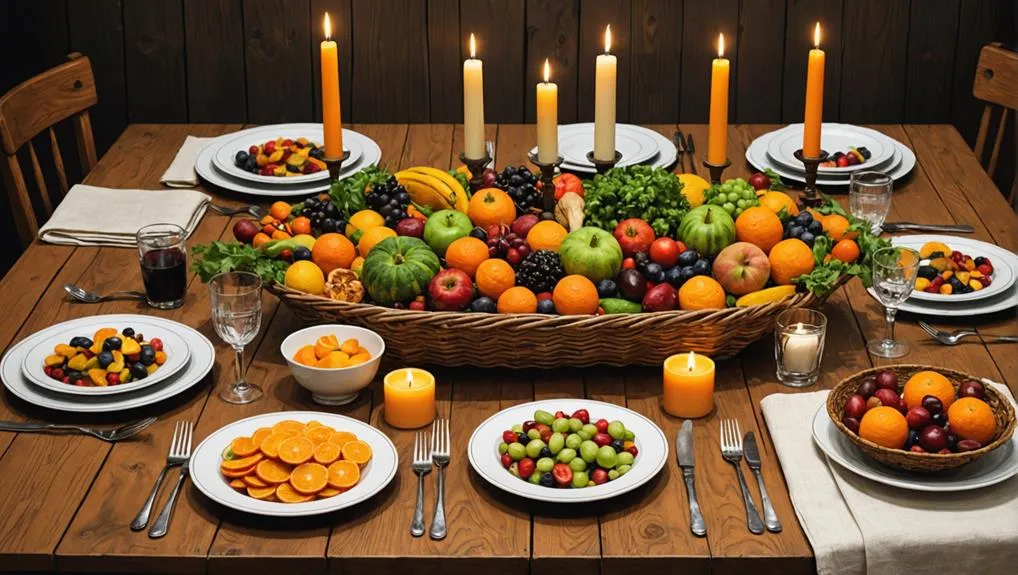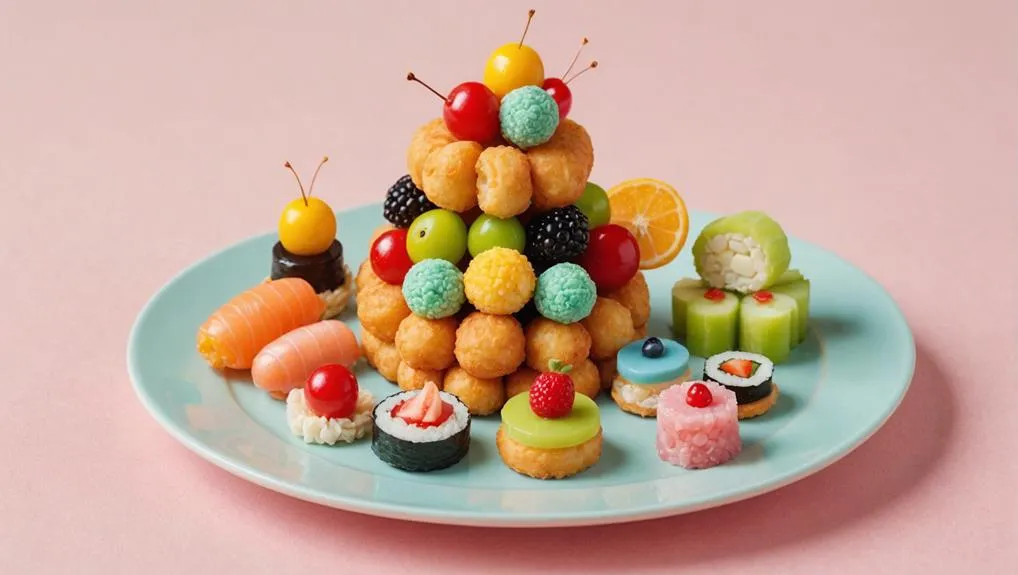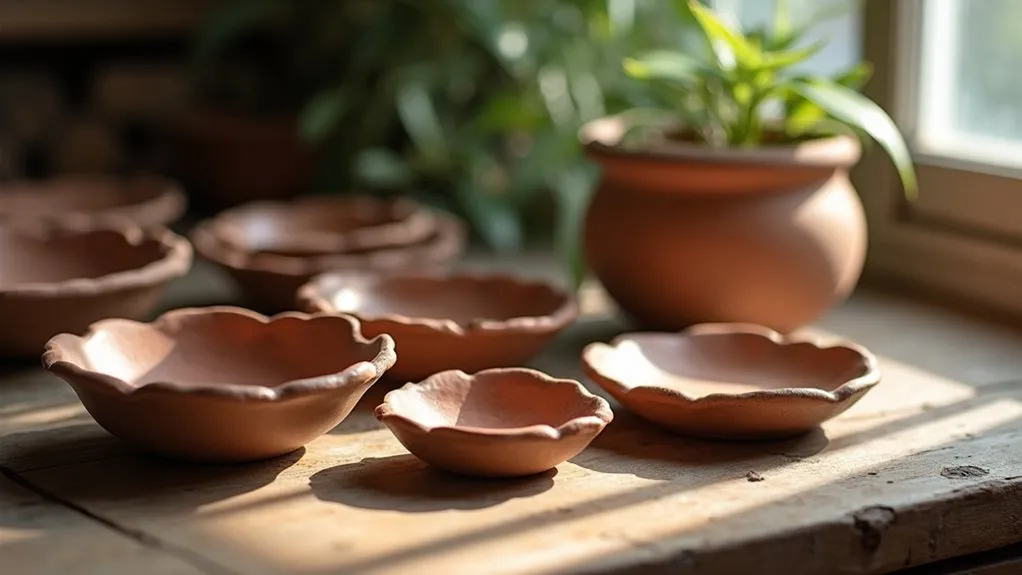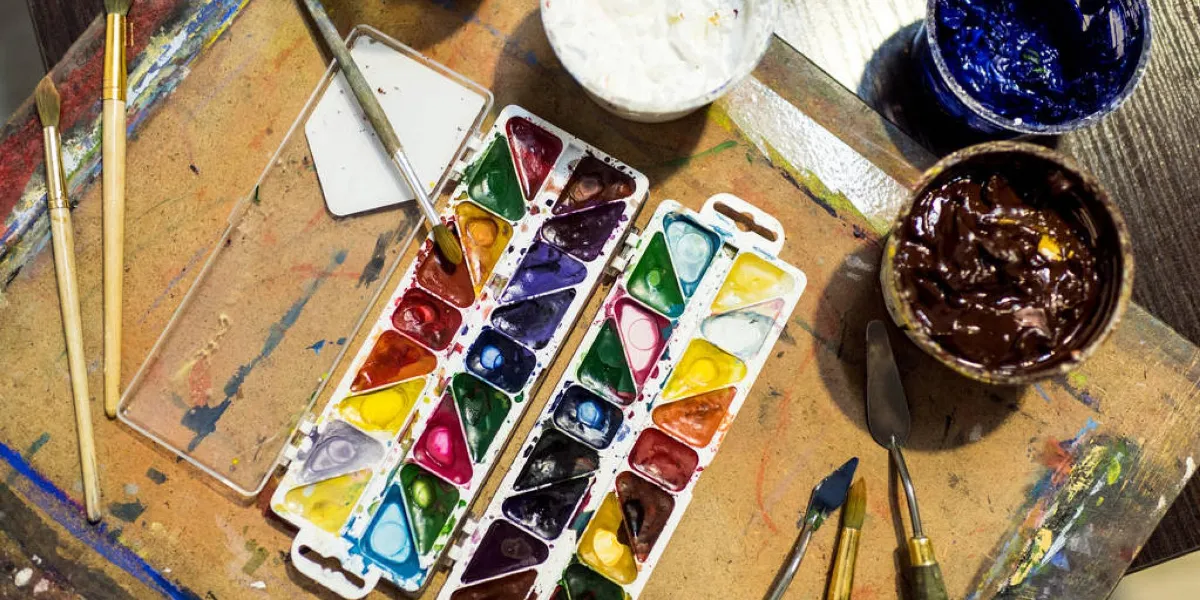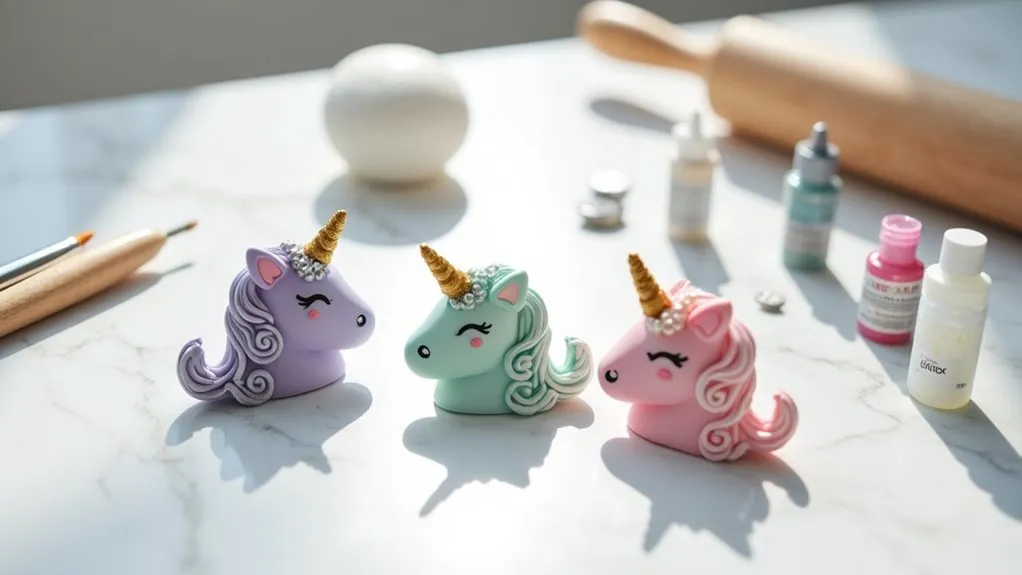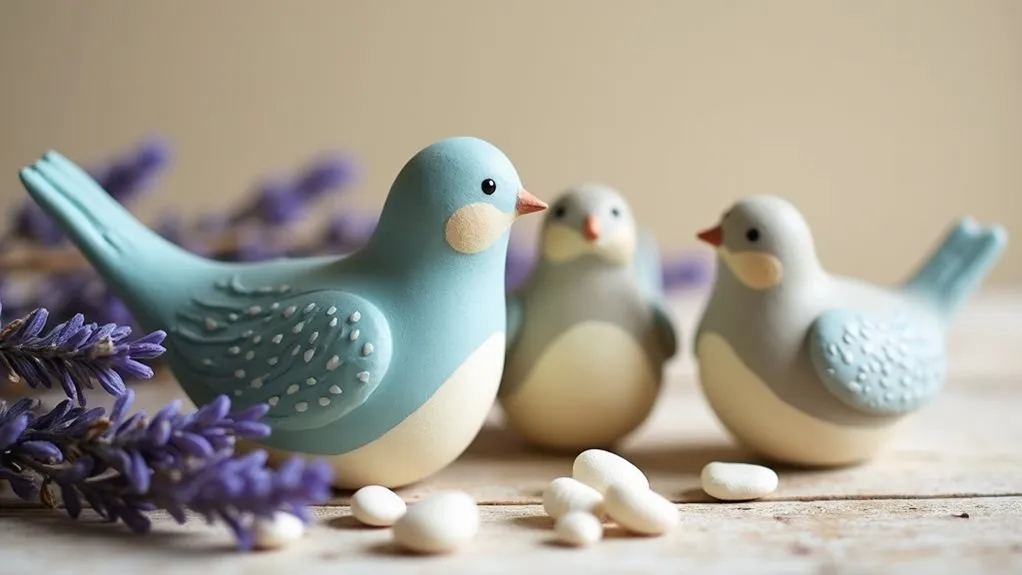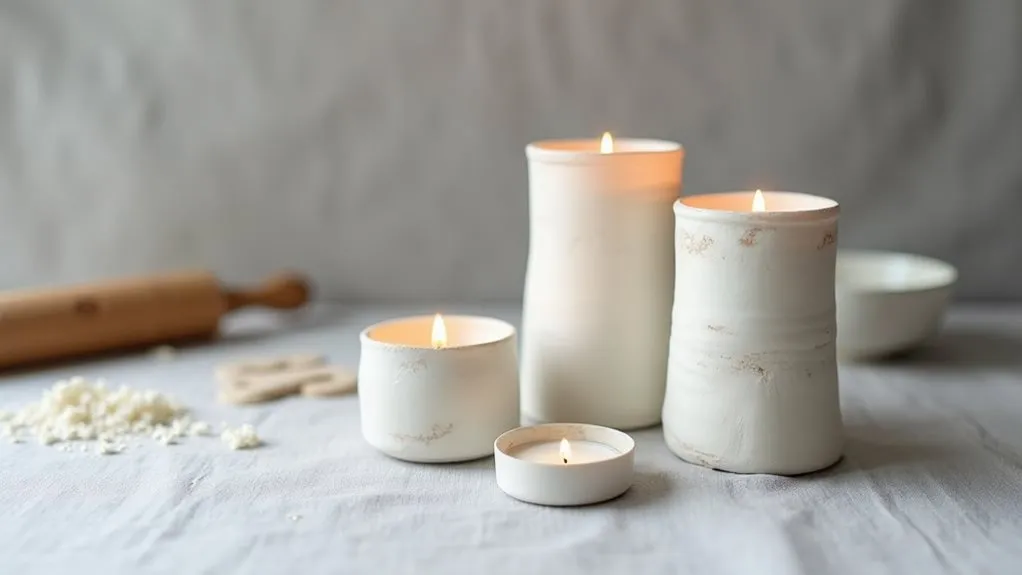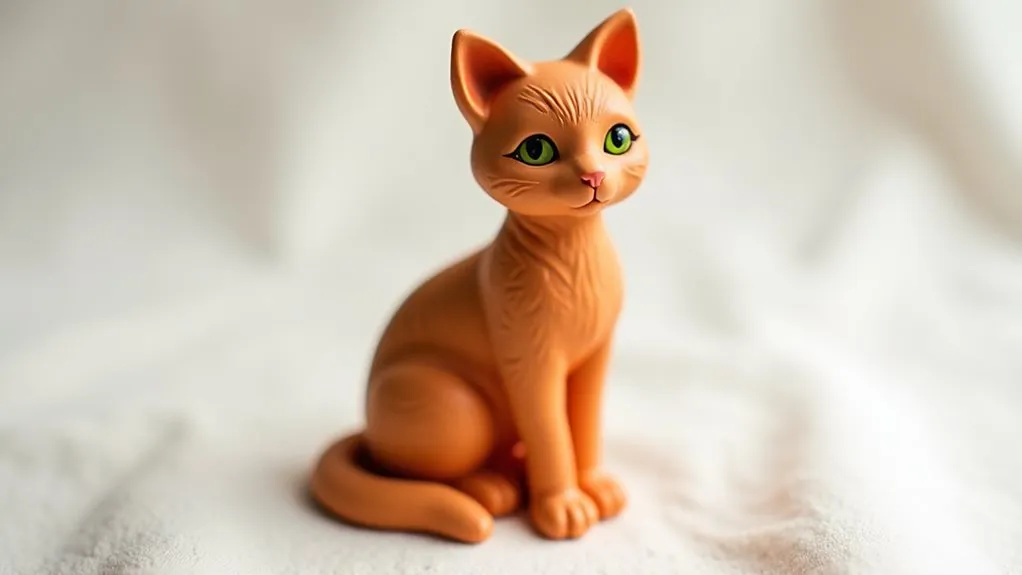You're about to unlock the secret to crafting air-dry food decor so realistic, it'll make everyone's mouth water. Start by drawing inspiration from foodie social media, family cookbooks, and restaurant menus to master classic recipes and presentation styles. Choose the right clay type for your project, whether it's air-dry for beginners or Sculpey polymer for intricate designs. Then, focus on mastering realistic textures and details with tools like fine toothbrushes and silicone tools. Understand shapes and proportions by breaking down food items into basic shapes, and finally, add finishing touches with gloss glazes and texture additives to take your creations to the next level – and that's just the beginning of your culinary crafting journey.
Drawing Inspiration From Food
As you delve into the world of air-dry food decor, start by feeding your creativity with a visual feast of inspiring food designs.
Scroll through social media platforms like Instagram and Pinterest to discover trending designs and concepts that'll make your miniature food creations stand out.
Flip through family cookbooks or favorite restaurant menus to uncover classic recipes and presentation styles that can serve as inspiration for your clay masterpieces.
Practicing cake decoration techniques using clay will help you master the art of creating realistic food textures and designs.
To ensure your creations pop, refer to a color recipe book to achieve consistent and visually appealing color reproduction.
Finally, consider common themes like seasonal treats or holiday specialties to focus your creative efforts and diversify your air-dry food decor collection.
Choosing the Perfect Clay Type
Three key factors – project needs, skill level, and desired outcome – should guide your selection of the perfect clay type for your air-dry food decor creations.
By considering these factors, you'll ensure your chosen clay meets your creative vision.
When it comes to air dry clay, it's ideal for beginners since it doesn't require baking, but keep in mind it may have consistency issues, making it less suitable for detailed work.
On the other hand, Sculpey offers a range of polymer clay types, each with its unique characteristics.
- Sculpey III is soft and easy to work with, but prone to fingerprints, affecting the final appearance.
- Premo and Soufflé clays provide greater flexibility and durability, making them perfect for intricate designs.
- Utilizing translucent clay can enhance realism, especially for items like pasta or fruit, by mimicking natural light passing through these materials.
- Consider the level of detail you want to achieve and the time you're willing to dedicate to your project when choosing between air dry clay and polymer clay.
Mastering Realistic Textures and Details
With your clay type selected, you're ready to bring your air-dry food decor creations to life by mastering realistic textures and details. A little bit of experimentation can go a long way in achieving a lifelike appearance.
Utilize a fine toothbrush to quickly add texture to your air-dry clay, gently brushing the surface to mimic the appearance of baked goods or fruits. Experiment with needle tools to create fluffy textures for items like cakes or pastries, enhancing the realism of your food decor.
Combine air-dry clay with liquid Sculpey to achieve a realistic frosting effect on cakes and cupcakes, providing a glossy, believable finish. Consider using silicone tools designed for sculpting to shape complex designs, allowing for detailed features and improving the overall quality of your decor.
Don't be afraid to test different techniques and tools on small samples to refine your style and ensure consistency in texture across your air-dry food creations. By doing so, you'll be able to achieve a level of realism that will make your decor stand out.
Understanding Shapes and Proportions
When crafting air-dry food decor, envision the food item you're about to create as a compilation of basic shapes. This approach makes it easier to achieve accurate proportions and details. Break down the food item into simple geometric shapes, such as circles for cookies and rectangles for pies. This simplifies the sculpting process and ensures accuracy in proportions.
- Use common clay cutters to facilitate the creation of basic shapes, providing a strong foundation for more complex designs.
- Manual sculpting with silicone tools may be necessary for intricate details, ensuring that even complex food items are represented accurately.
- Maintain accurate proportions, as overly large or small features can detract from the visual realism of the final piece.
- Start with basic shapes and incrementally develop toward more detailed and lifelike food representations, making it easier to achieve realism.
Adding Finishing Touches for Realism
As you've successfully crafted the foundation of your air-dry food decor, it's time to elevate its realism with finishing touches that will make it almost indistinguishable from the real thing. A gloss glaze can work wonders, adding a subtle sheen that makes your food decor look fresh out of the kitchen.
To take it up a notch, use specific finishes like colored glazes or paints to accentuate the details of each food item. For instance, a rich brown glaze can give your air-dry meat a savory appearance, while a glossy red can make your cherries look juicy and ripe.
To add an extra layer of realism, incorporate texture additives or coatings to simulate the look of sugar or powdered toppings on desserts. This attention to detail will make your food makes look like they're straight out of a bakery.
If you want to get creative, add eyelets or jewelry components to turn your air-dry food decor into wearable art.
Final Thoughts
As you bring your air-dry food decor to life, remember that it's all about the subtleties. Your creations are like delicate recipes, where one wrong ingredient can throw off the entire dish. But with patience and practice, you'll be serving up realistic masterpieces that'll leave people hungry for more. Now, take a step back, admire your handiwork, and relish the satisfaction of having crafted something truly delectable – a visual feast that's sure to satisfy the eyes.

